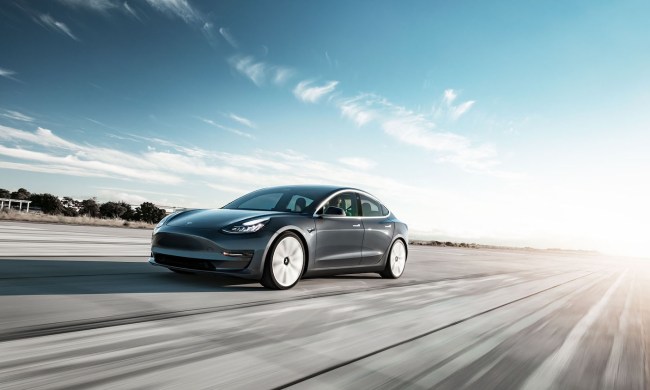In a blog post recounting the incident, Urmson said “minor” whiplash injuries had been suffered by the three people inside the Google car, though following a hospital check they were free to return to work. The driver also suffered whiplash, and their car’s “entire front bumper fell off.”
The project chief said the accident occurred earlier this month near Google’s Mountain View base as one of its modified Lexus vehicles approached an intersection in driverless mode.
“The light was green, but traffic was backed up on the far side, so three cars, including ours, braked and came to a stop so as not to get stuck in the middle of the intersection. After we’d stopped, a car slammed into the back of us at 17 mph – and it hadn’t braked at all.”
Urmson even posted a computer simulation (above) of the incident that showed Google’s self-driving car braking gently just seconds before it had an unwelcome visitor ramming it from behind.
He said the car behind “never decelerated….like the driver was distracted and not watching the road ahead.”
Google started revealing information on accidents involving its fleet of about 20 driverless cars in May, and intends to publish updates on a monthly basis. According to Urmson, others drivers have knocked, bumped and slammed Google’s cars just 14 times during more than 1.8 million miles of driving, noting that “not once has the self-driving car been the cause of the collision.”
Attempting to sell the idea of self-driving cars at the same time as reassuring those who’re still not convinced by their safety and reliability, Urmson says its special vehicles “can pay attention to hundreds of objects at once, 360 degrees in all directions, and they never get tired, irritable or distracted,” while humans….well, you know what you’re like.


